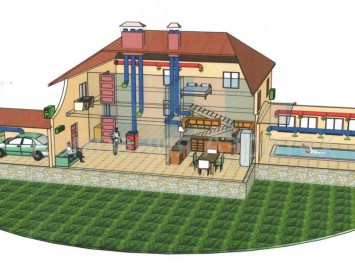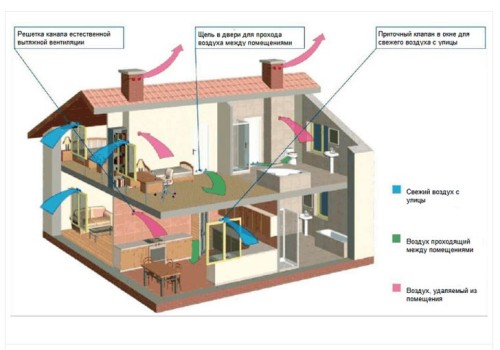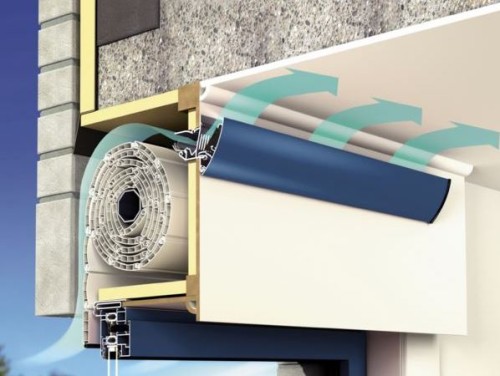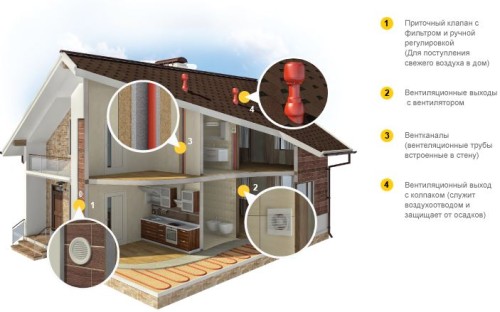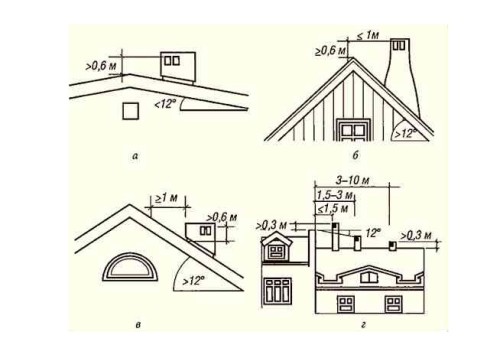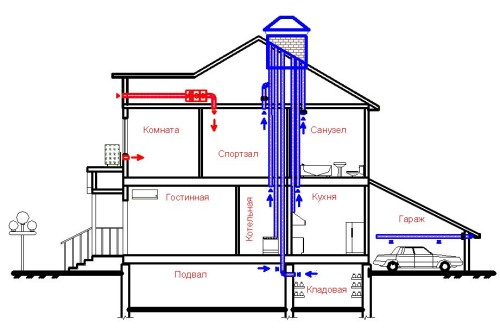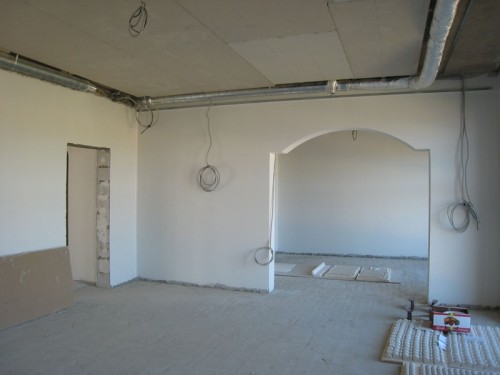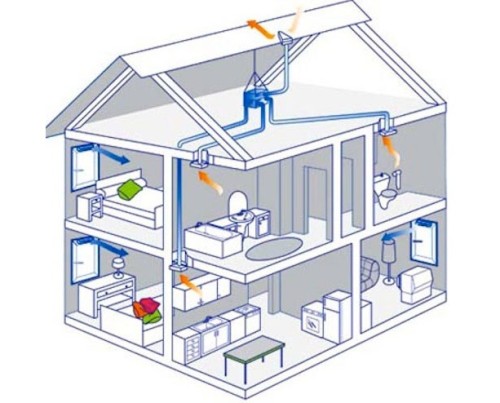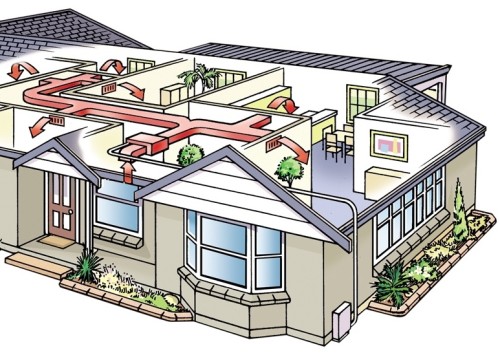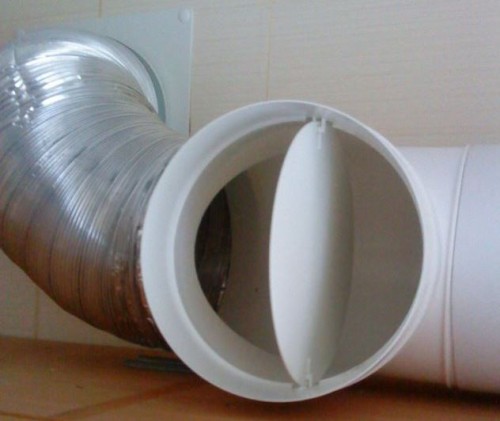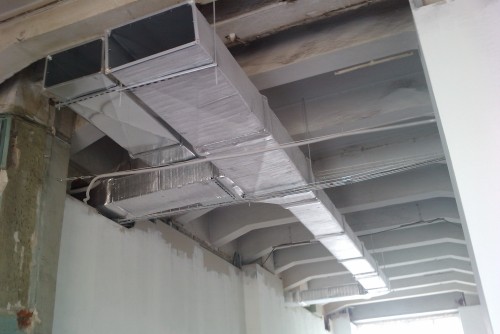The comfort of living in a private house or apartment is determined by many factors. It is no secret that the microclimate in them largely depends on the circulation of air flows. In order to breathe really clean air, during the construction of housing and its further arrangement it is important to carefully consider the ventilation system. If the air outside is fresh enough, it is advisable to use natural ventilation in the rooms. Having spent a little work and time, a similar system can be installed independently.
Content
How natural ventilation functions
In the process of erecting any residential building, a natural ventilation system is developed according to the principle similar to ventilation. It is not difficult to organize an air flow by opening windows and doors - nevertheless, in the season of the cold, the possibilities of ventilation are largely limited. In addition, in some rooms, due to the lack of windows, the task is largely complicated.
It is quite possible to create a stable comfortable microclimate in various rooms by installing a natural ventilation system, moreover, it can be installed with a minimum of costs. In a residential building or apartment of the premises in which the air flow is carried out, they are called dry (they include, for example, a bedroom and a living room). The kitchen, as well as the bathroom, is traditionally premises that are characterized by the presence of high humidity mode - therefore, from them it is required to organize moist air removal. In this case, dry air enters the house and a moisturized one is removed, while the accumulation of excess moisture and the appearance of unpleasant odors in the rooms can be avoided. Under the influence of temperature changes and pressure, traction occurs, due to the natural supply ventilation through holes, gaps, windows and ducts, fresh air enters the rooms. Heated light air masses rush out through natural exhaust ventilation, cool and fresh air comes in their place. At the same time, the impact on the traction is exerted by the wind, the height and section of the ventilation ducts, the presence of narrowing and bends, as well as thermal insulation.
It is necessary to take into account a number of requirements for the arrangement of natural ventilation of the house. It is necessary that such a ventilation system ensures:
- the presence of constant movement of air masses in the house - with a high -quality tributary of fresh air into all rooms;
- removing polluted air from the kitchen, as well as from sanitary premises.
In this case, it is necessary to avoid tangible cooling of air in the winter, as well as the occurrence of drafts in the house.
Distinguish the following varieties of natural ventilation systems:
- channel (with the placement of vertical channels in houses), as well as without channels (such systems are used in production facilities);
- constant ventilation carried out by supplying the air flow through the valve system, as well as periodic-with ventilation through any intervals.
Features of natural ventilation
It is worth noting that the arrangement of natural ventilation is appropriate in the presence of really clean air outside the room. This type of ventilation is optimal for small buildings located in the environmentally friendly territory - in such cases, forced ventilation systems will not be used. In addition, it is necessary to take into account the type of materials used in the construction. The most natural ventilation is most suitable for brick, wooden and stone buildings, as well as for buildings from building expanded clay, ceramic, gas, slag and foam blocks, Saman or from monolithic expanded clay concrete.
Before installing the natural ventilation system, it is important to make careful planning, otherwise the microclimate in the rooms may be far from the ideal. In such cases, various unpleasant symptoms (stale air, a feeling of severity after sleep in people living in the house, as well as their allergies) can be observed. To avoid the penetration of extraneous sounds, insects, as well as fluff and dust through the air ducts, some improvements are introduced into the system - for this, supply channels equipped with insulation for absorption of noise, as well as mosquito nets, are mounted in the external walls. In addition, it is worth taking into account the following - in old buildings, air circulation was carried out through the existing cracks between the doors and the floor (the so -called perennial holes), as well as through loosely adjacent wooden frames. Nevertheless, in residential premises it was necessary to open windows or windows for ventilation.
Modern window structures, as well as the doors, provide tightness of the rooms, so they are often stuffy, the air contains harmful evaporation, and mold reproduction is observed. If you do not want to hold the window sash constantly ajar, to ensure a stable flow of fresh air, you need to provide special supply valves in the window openings or in the walls. The flow of heated air masses is diverted from the premises in exhaust pipes, and fresh in its place comes.
Pros and cons of natural ventilation
The advantages of installing a natural ventilation system include:
- the simplicity of the design, due to which the probability of failures and breakdowns is minimized;
- the lack of the need to purchase special expensive equipment. Having mounted it, it is possible to achieve significant saving of funds in comparison with the installation of forced or mixed ventilation systems;
- natural air circulation is perfectly combined with the operation of climatic systems in the premises;
- with the help of a thoughtful natural ventilation system, it is possible to maintain optimal humidity and regulate heat transfer in the house, as well as heating unheated rooms - for example, corridors, staircases.
As the disadvantages of natural ventilation, it is worth mentioning its limited possibilities. For the normal functioning of the human body, a constant influx of fresh air is necessary, which can not always fully ensure natural ventilation. With insufficiently active air exchange, mold and fungus can multiply in the rooms, harmful evaporations secreted by building materials, equipment and furniture can accumulate. In the case of stagnation of air masses, the appearance of dampness and the accumulation of unpleasant odors can be observed in the rooms. In addition, it is worth noting dependence on the air temperature on the street - the lower it is, the colder the air entering the room through the ventilation ducts (and therefore, the cost of heating increases - in some cases up to 40%).
Often, in order to achieve the most effective result, it is worth combining natural ventilation in the house with its other species - in such cases in addition to it in places where it is necessary (as a rule, in working and sanitary premises), mechanical or exhaust ventilation is equipped.
DIY natural ventilation arrangement
When planning, how to make natural ventilation, it is necessary to take into account the following. A similar ventilation system in a private house is organized by equipping exhaust channels and installation of supply valves. In the process of building the building, it will be necessary to provide ventilation ducts, so they should plan their arrangement before the start of construction. Depending on the specific conditions, at the design stage, it will be necessary to develop a natural ventilation scheme and perform the necessary engineering calculations.
In apartment buildings, ventilation channels are combined into blocks. In private buildings, there is no need to combine ventilation flows, otherwise the effectiveness of ventilation functioning is slightly reduced. Each channel from the room should be removed to the roof heads. In order to reduce the influence of wind on the functioning of the ventilation system, it should be placed in a certain way relative to the surface of the roof. On one floor, it is more convenient to place several channels nearby, combining them into a single riser. Such channels are usually placed inside the carrier wall or attached to it. Such risers for ventilation are laid out of stone or bricks, in addition, ventilation channels can be placed inside hollow concrete blocks. In wooden and frame buildings of the system, ventilation systems are equipped from plastic or steel pipes placed in a box.
Stages of work
In fact, the sequence of actions to install natural ventilation with your own hands comes down to the following steps:
- the implementation of technical calculations is the calculation of the necessary minimum volume of supply and exhaust air according to sanitary standards. In accordance with the results of the calculations, the quantity and height of the ventilation ducts should be planned. When performing calculations, you should take into account the number of people who will be indoors, as well as the necessary volume of supply air. The performance of these calculations is easier to entrust to professionals;
- the selection of a suitable type and cross section of the air ducts according to the results of the calculations. For the arrangement of natural ventilation, round ducts are used, as well as with a rectangular section;
- development of an indicative layout of ventilation ducts;
- selection of places for air intake and equipment installation;
- purchase of the necessary materials and devices necessary for the installation of ventilation;
- installation of the ventilation system.
Where are the natural ventilation channels
When planning the ventilation arrangement, it is worth considering that exhaust channels will need to be equipped in the following places:
- in the kitchen, bathroom and laundry;
- in the pantry or dressing room - in cases where they need to enter from the living room. If their doors go into a non -residential room, the supply valve should be provided in the window opening or on the wall;
- in rooms separated from existing ventilation ducts with several doors;
- exhaust and supply ventilation will need to be equipped in a boiler room;
- above the first floor, if the front door is provided from the stairs, the ventilation channels should be provided in the above rooms - or, in case of their absence, in the lobby or in the corridor. If such a door is absent, exhaust ventilation channels must be provided in all rooms.
In other rooms, in the absence of an exhaust channel, you will need to equip the supply valves placed in a window opening or on the wall. It is necessary to provide exhaust channels from rooms with a regime of high humidity. Natural ventilation should also be provided under the floor from the boards of the first floor, as well as inside the basement. If there is a basement that is actively operated and heated, ventilation should be equipped in it similarly to the first floor. It is also worth taking into account the following - if the descent into the basement is located inside the house, it must be separated from residential premises using a sealed door.
